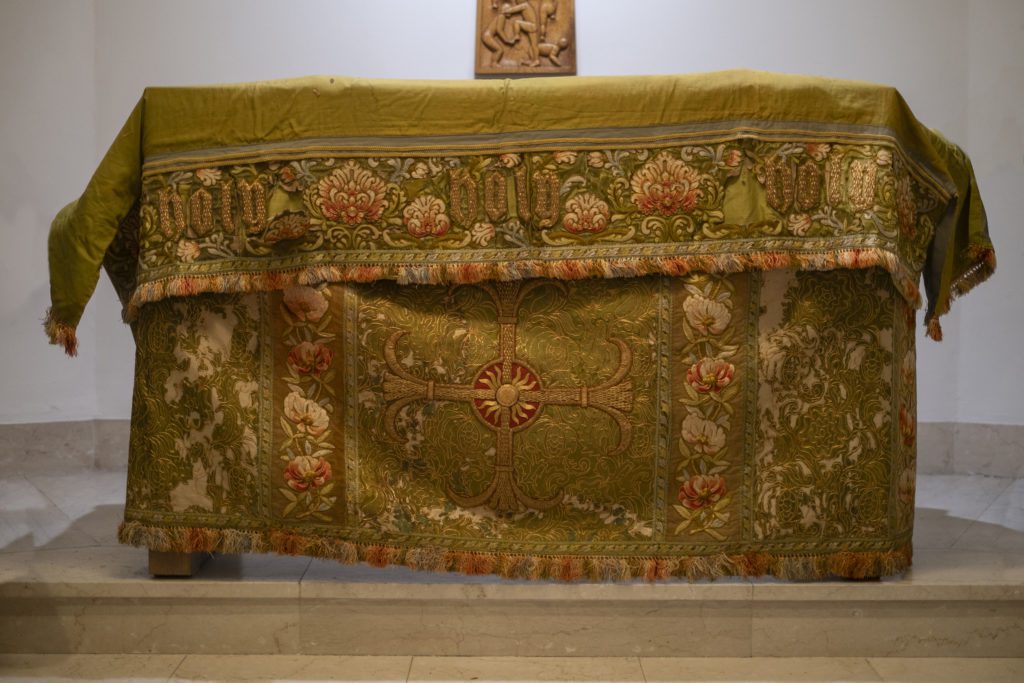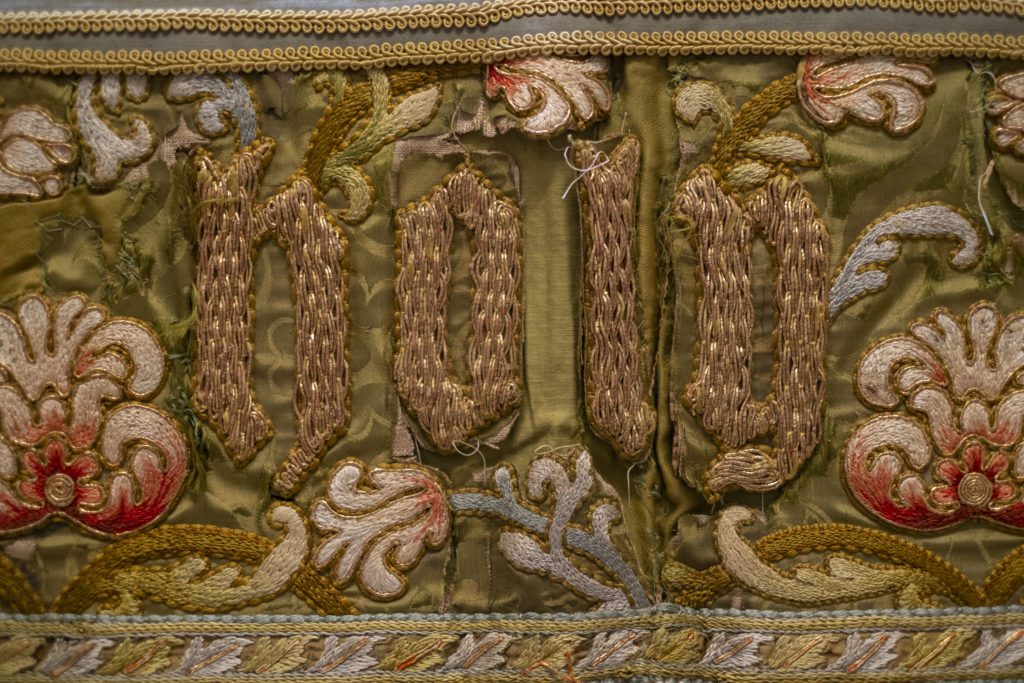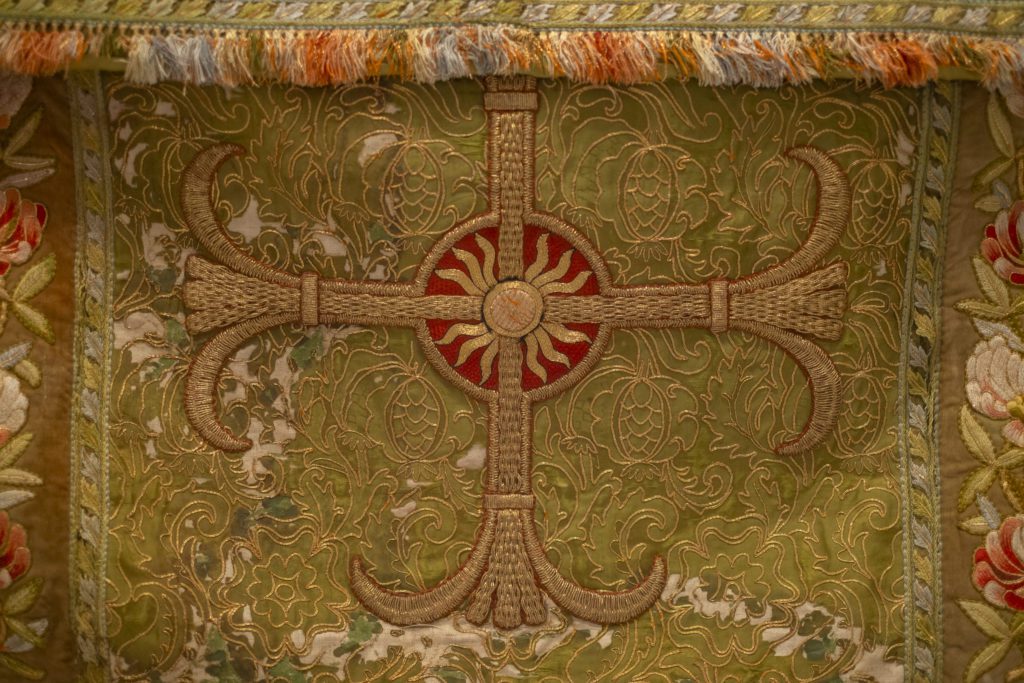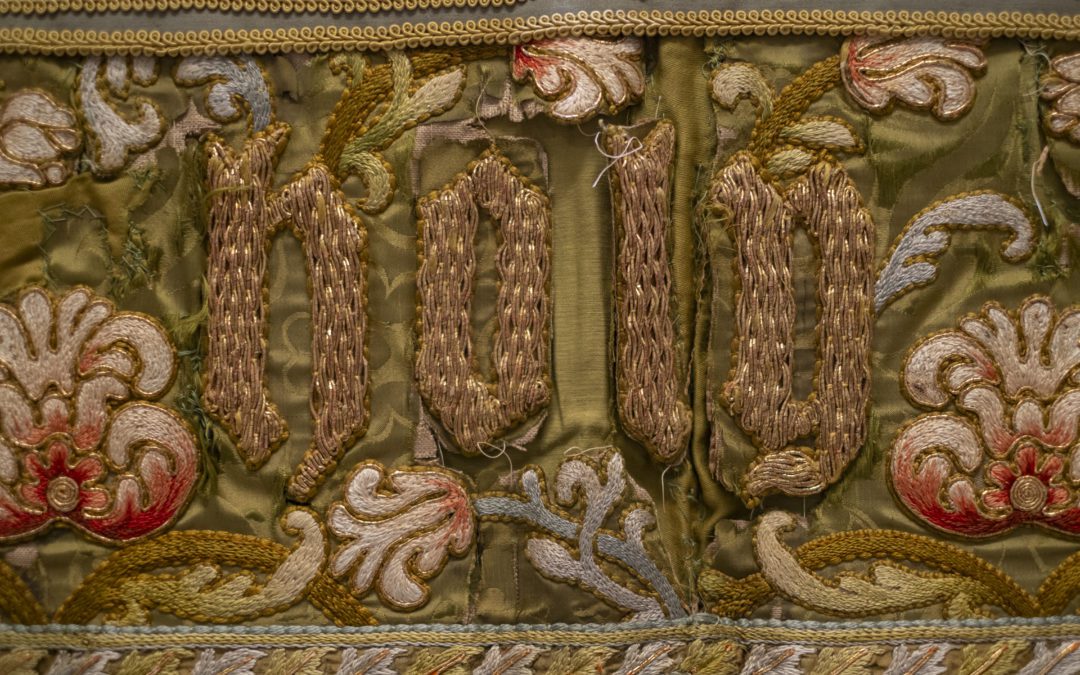Tuesday 14th January is Heritage Treasures Day 2025, an annual moment to showcase the amazing diverse heritage across the UK. This year we’re taking a look at the Khartoum Altar Frontal by the Leek Embroidery Society. Throughout 2025 we will continue celebrating our Cathedral’s wonderful textile heritage with our ‘Weaving Stories’ exhibition, made possible by the National Lottery Heritage Fund.

The Khartoum altar frontal has an interesting history. It was embroidered by 28 female embroiderers from the prestigious Leek Embroidery Society, in 1905, with the purpose of being taken to Khartoum to be placed in a church there in memory of General Charles Gordon, who died in Khartoum in 1885. The first Episcopal (Anglican) Cathedral in Khartoum, All Saints Cathedral, was opened in 1912, and one of its side chapels was dedicated to the memory of General Gordon, which was where the altar frontal was designed for and was then located.
It was brought to Bradford Cathedral from Khartoum in the late 1980s, via our diocesan links with Sudan. It wasn’t in a very good state when it came to us- with time, the tropical climate and a lack of care in later years all having unfortunately taken their toll – and the fabric of the altar frontal was and still is very fragile in places, with the gold thread also disintegrating due to the rotting of the inner silk core. In 2015 Jacqui Hyman, a textile conservator who was working with Bradford Cathedral at the time on the restoration and conservation of the WW1 and Morris & Co. altar frontals, took the Khartoum frontal and superfrontal, restored them as much as she was able to in her free time and for her own pleasure, and displayed them at exhibitions in subsequent years. Jacqui later gave the altar frontal back to the Cathedral.

Leek Embroidery Society
The Leek Embroidery Society was founded in 1879, inspired mainly by Mrs. Elizabeth Wardle, wife of Thomas Wardle, a well-known silk dyer from Leek in Staffordshire, who collaborated with William Morris on a number of occasions. The Society produced many altar frontals and other pieces of church embroidery in silk, along with secular embroideries. Many of their altar frontals are still in use today.
The Society created work for the leading artists and architects of the day: Walter Crane, Norman Shaw, John Sedding and George Gilbert Scott.
Design of the Altar frontal
Richard Norman Shaw was a British architect who worked from the 1870s to the 1900s. He is considered to be among the greatest of British architects. As well as being primarily known for his country houses and commercial buildings, he also pursued work in the area of ecclesiastical textiles, particularly altar frontals. The design of the altar frontal features the architect Norman Shaw’s distinctive cross applied to a richly embroidered ground cloth.

Due to the fragility of the altar frontal it isn’t possible for it to be used for services or to have it out on regular display.

A viewing of the altar frontal is now possible on our ecclesiastical textiles’ tour, which is taking place on Saturday 1st February 2025 from 1.30pm – 2.30pm. On the tour you can view this altar frontal and also see work by Morris & Co, Bradfordian artist Ernest Sichel and renowned Bradfordian embroiderer Louisa Pesel, who designed an altar frontal that was worked on by shell-shocked soldiers during World War One. There are also contemporary textiles designed by Polly Meynell.
Come and see these stunning textiles in situ – some of which are rarely on display – and hear the fascinating stories behind them. Please book early to avoid missing out. Tickets cost £7 + booking fee from https://ecclesiastical-textiles-2.eventbrite.co.uk/ Light refreshments will also be available afterwards.
For more information on Heritage Treasures Day please visit their website or search #HeritageTreasures on Instagram or X.
Coming Soon: Weaving Stories
Thanks to the National Lottery Heritage Fund, Bradford Cathedral is excited to showcase ‘Weaving Stories’, a project that will shine a light on the historic textile treasures of the Cathedral and see the creation of new tapestry. As Bradford celebrates its status as UK City of Culture 2025, ‘Weaving Stories’ will reflect the city’s historic role as a global centre of wool manufacturing, trade and industry, and bring together artists, makers, school children, students, families, and Cathedral visitors from all over the world. With them, the co-creation of a new tapestry will reflect the fascinating heritage of the Cathedral, and the dynamic spirit of the city and its communities.


Extraordinary! I’m researching the Leek Embroidery Society and other female embroidery groups in the c19th.
Difficult to find but l am determined!
I walk with crutches and find large buildings very tiring but frequently glorious and rewarding.
The display of the frontal is such a good idea and will be most interesting to compare with it’s “cousin” and the contemporary use of Asian silks and threads.
May l enquire of the dates of the display please?
Would a map and directions from the rail station be available please?